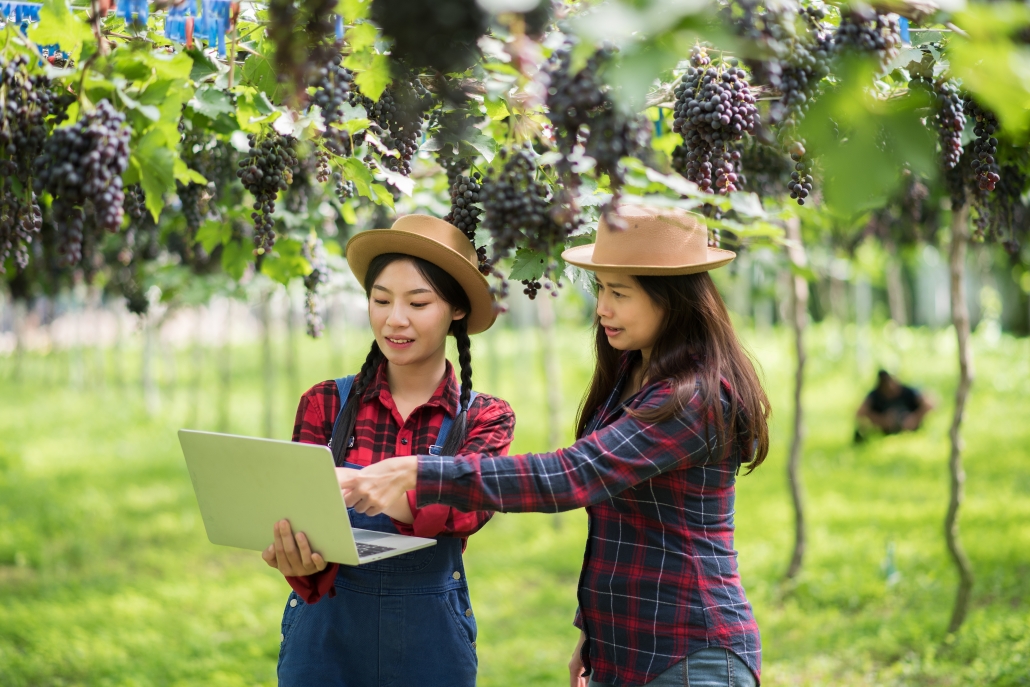Farming is a demanding profession. Farmers work long hours managing vast fields and caring for livestock. But thanks to technology, it’s getting a lot easier and smarter. Smart farming involves using technology to make farming practices more efficient and effective. It’s like giving farmers a helping hand, freeing up their valuable time and energy. And in 2024, exciting new advancements in smart farming are making a big difference.
So, let’s explore some of these innovations and how they’re helping farmers save time and effort!

Hydraulics for Enhanced Machine Efficiency
Hydraulic cylinders are crucial parts of farm machinery, like tractors and harvesters. They help these machines lift heavy loads and perform tough tasks with ease. One smart way to improve these cylinders is a process called rephasing.
In agriculture, rephasing hydraulic cylinders includes syncing them up so they work perfectly in time with each other. This is especially important when cylinders are used in pairs or groups, like in equipment with multiple arms or extensions.
But why is rephasing useful? It reduces maintenance time and improves. When cylinders are properly synced, they wear out more slowly and evenly. This means they don’t need to be repaired or replaced as often, saving time and money.
Automation Through Robotic Systems
Automation is changing the way farms operate, especially with the introduction of robotic systems like autonomous tractors and drones. These robots are not just fancy equipment; they are practical tools that make farming more efficient.
Autonomous tractors are a big help because they can work by themselves. Farmers can program them to go up and down the fields, planting seeds or harvesting crops without a person needing to drive them. This saves a lot of time and lets farmers focus on other important tasks.
Drones also play a big role in modern farming. They fly over fields and take pictures. This means farmers can be very specific in how they treat their crops, which can lead to better harvests using fewer resources.
Advanced Water Management Systems
Water is essential for farming, but it’s not always used efficiently. Luckily, new technologies are making it easier to manage water better. These innovations help save not just water but also energy, which is good for the planet and for farmers’ budgets.
One of the biggest advancements in farm water management is the development of smart irrigation systems. These systems use real-time data to decide exactly when and where water is needed. This means less water is wasted, and every drop is used where it’s truly needed.
Soil moisture sensors are another key technology in advanced water management. These small devices are placed in the soil, and the soil is constantly checked for wetness or dryness. This information is sent to a computer, allowing farmers to see which parts of their fields need more water.
IoT and Real-Time Data Management
In the world of farming, staying updated with the latest conditions of your crops and soil is crucial. This is where IoT, or Internet of Things, devices come into play. These small, smart gadgets are placed around the farm to collect all sorts of data about the environment.
IoT devices send this data back to the farmer in real-time. This means that farmers don’t have to guess or wait around to find out what’s happening in their fields. They get updates instantly. For example, if a part of the field needs more water, the farmer can start the irrigation system right away.
The biggest benefit of using real-time data through IoT is what we call precision farming. This method lets farmers be very precise in how they use resources like water and fertilizers. Instead of treating the whole farm the same, they can target specific areas that need attention.
The Rise of AI and Machine Learning in Agriculture
Artificial Intelligence (AI) is becoming a big part of farming, especially when it comes to understanding what crops need to grow well. AI works by using data. For example, it can look at past weather information, soil types, and crop growth patterns.
By analyzing all this data, AI can tell farmers what to expect in the upcoming seasons. This helps them plan better and use the right amount of water and fertilizers, which saves money and is better for the environment.
Machine learning is also used to spot diseases and pests in crops. Special models have been trained to recognize the signs of these problems. These models look at pictures from cameras in the fields and can spot issues that even the most experienced farmers might miss.
Conclusion
As we look towards the future, it’s clear that smart farming is more than just a trend; it’s the next big step in agriculture. By using these advanced technologies, farmers are making their work easier and helping to ensure that we all have enough food. So, as we move into 2024 and beyond, the possibilities for what we can achieve with smart farming are truly limitless.





